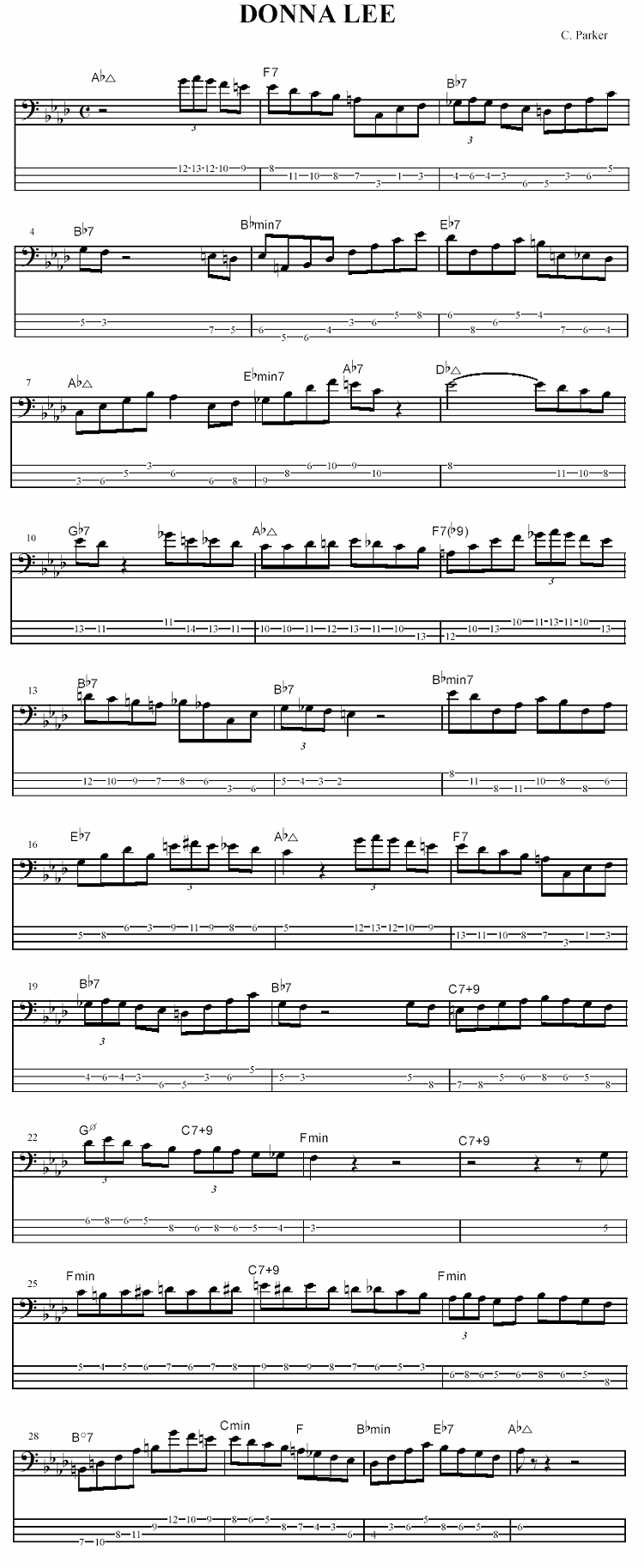Hi everybody. In this lesson I want to talk about a composition which is in the repertoire of jazz standards, but it has become a "must" for electric bassist since the great Jaco Pastorius included a version in his unforgettable first record. As you might have guessed we are talkin' about "Donna Lee", written by Charlie Parker. Bass-wise this composition is particularly difficult, both for the phrasing and for the fingerings, without mentioning the speed.
I'd like to have a look at
it to find a simpler way to play it (good luck everybody). For this purpose I've
included, apart from the bass part, a tablature and a midi file which permit to
study at a fairly slow speed, increasing the speed slowly.
Before getting into it, I'd like to analize the composition firstly, harmonically and melodically. This is a fundamental step, because it will lead to a more conscious study, and I consider this a good habit every time you front a standard: understanding the key, the form, the tonal centers and being able to recognize the grade of every chord. If you decide to improvise on the chords it's very important to understand if a minor chord is a 2nd, 3rd or 6th grade of the major key, so to be able to choose the best scale to utilize.
The form is a A-B of 32 bars (16 bars in A, 16 bars in B). The key with 4b is Ab, but already at the second chord (F7) it seems we are somewhere else; the 7th chord is a fifth grade, but in this case I consider both F7 and the following Bb7 not as dominant chords, but as 6th
and 2nd of Ab, used with 7th chords. This is typical of Parker: utilize the various grades of the scale (expecially the minors) as 7th
chords. For example our typical C7+ / Am7 / Dm7 / G7 progression will become C7+ / A7 / D7 / G7. Obviously we'll use the mixolydian scale in every chord.
In the B section there is another interesting thing, when after 4 bars it goes to Fm, with the C7/9+ chord. This is an altered chord, and Aebersold generally will consider it as C, Db, D#, E, F#, G#, Bb. In this case we can use the super-locrian scale. We could use various scales, such as diminished and esatonal, because part of these scales is being utilized.
Last thing I want to point at is that in some parts the melody is put on top of a different chord of the armony. Here are some examples, but you can find others yourselves.
In the 3rd and 4th
quarter of the 3rd bar harmonically there is a Bb7, but if we analyze the melody we find a Dm7/5b (practically a Bb7/9 without root).
In the 7th bar harmonically there's a Ab and melodically a Cm7 (same concept: no root, add a 9th ).
With this we can go back to
the 1st
lesson
(...rewiiiind...!), where we tried to play all chords starting from the 3rd, omitting the root and adding the 9th. Furthermore, analysing the melody in this way many parts of the composition can be played exactly following the fingerings of the chords, making it easy for you.
Now you just need to start playing it. Enjoy and see you next time.
Donna Lee File MIDI



